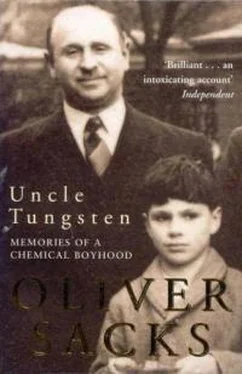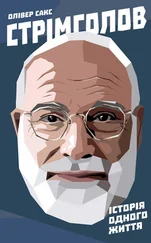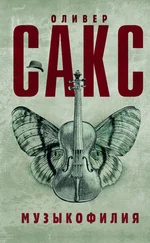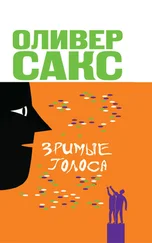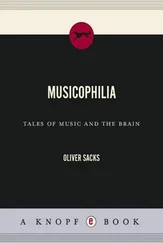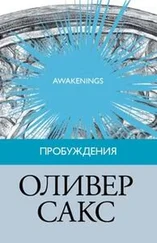It was equally easy to predict the properties of the unknown halogen, for the halogens, too, were very similar, and the group showed simple, linear trends.
But predicting the properties of 43 and 61 would be trickier, for these were not ‘typical’ elements (in Mendeleev’s term). And it was precisely with such nontypical elements that Mendeleev had run into trouble, leading him to revise his original table. The transition metals had a sort of homogeneity. They were all metals, all thirty of them, and most of them, like iron, were hard and tough, dense and infusible. This was especially so of the heavy transition elements, like the platinum metals and filament metals Uncle Dave had introduced me to. My interest in color brought home another fact, that where compounds of typical elements were usually colorless, like common salt, the compounds of transition metals often had vivid colors: the pink minerals and salts of manganese and cobalt, the green of nickel and copper salts, the many colors of vanadium; going with their many colors were their many valencies, too. All these properties showed me that the transition elements were a special sort of animal, different in nature from the typical elements.
Still, one might hazard a guess that element 43 would have some of the characteristics of manganese and rhenium, the other metals in its group (it would, for instance, have a maximum valency of 7, and form colored salts); but it would also be generically similar to the neighboring transition metals in its period – niobium and molybdenum to the left, and the light platinum metals to the right. So one could also predict that it would be a shining, hard, silvery metal with a density and melting point similar to theirs. It would be just the sort of metal Uncle Tungsten would love, and just the sort of metal which would have been discovered by Scheele in the 1770 s– that is, if it existed in sensible amounts.
The hardest prediction, in any detail, would be for element 61, the missing rare earth metal, for these elements were in many ways the most baffling of all.
* * *
I think I first heard of the rare earths from my mother, who was a chain smoker and lit cigarette after cigarette with a small Ronson lighter. She showed me the ‘flint’ one day, pulling it out, and said it was not really flint, but a metal that produced sparks when it was scratched. This ‘mischmetal’ – cerium mostly – was a mishmash of half a dozen different metals, all of them very similar, all of them rare earths. This odd name, the rare earths, had a mythical or fairy-tale sound to it, and I imagined the rare earths as not only rare and precious, but as having special, secret qualities possessed by nothing else.
Later Uncle Dave told me of the extraordinary difficulty which chemists had had in separating the individual rare earths – there were a dozen or more – for they were astoundingly similar, at times indistinguishable in their physical and chemical properties. Their ores (which for some reason all seemed to come from Sweden) never contained a single rare-earth element, but a whole cluster of them, as if nature herself had trouble distinguishing them. Their analysis formed a whole saga in chemical history, a saga of passionate research (and frequently frustration) in the hundred years or more it took to identify them. The separation of the last few rare-earth elements, indeed, was beyond the powers of chemistry in the nineteenth century, and it was only with the use of physical methods such as spectroscopy and fractional crystallization that they were finally separated. No fewer than fifteen thousand fractional crystallizations, exploiting the infinitesimal differences in solubility between their salts, were needed to separate the final two, ytterbium and lutecium – an enterprise that occupied years.
Nonetheless there were chemists who were enthralled with the intransigent rare-earth elements and spent their entire lives trying to isolate them, sensing that their study might cast an unexpected light on all the elements and their periodicities:
The rare earths [wrote William Crookes] perplex us in our researches, baffle us in our speculations, and haunt us in our very dreams. They stretch like an unknown sea before us, mocking, mystifying, and murmuring strange revelations and possibilities.
If the rare-earth elements baffled, mocked, and haunted chemists, they positively maddened Mendeleev as he struggled to assign them a place in his periodic table. There were only five rare earths known when he constructed his first table in 1869, but then more and more were discovered in the decades that followed, and with each discovery the problem grew, because all of them, with their consecutive atomic weights, belonged (it seemed) in a single space in the table, crushed, as it were, between two adjoining elements in Period 6. Others, too, struggled with the placement of the maddeningly similar elements, further frustrated by a deep uncertainty as to how many rare-earth elements there might ultimately prove to be.
Many chemists, by the end of the nineteenth century, were inclined to put both the transition and the rare-earth elements into separate ‘blocks’, for one needed a periodic table with more space, more dimensions, to accommodate these ‘extra’ elements that seemed to interrupt the basic eight groups of the table. I tried making different forms of periodic table myself to accommodate these blocks, experimenting with spiral ones and three-dimensional ones. Many others, I later found, had done the same: more than a hundred versions of the table appeared during Mendeleev’s lifetime.
* * *
All of the tables I made, all of the tables I saw, ended with uncertainty, ended with a question mark, centered around the ‘last’ element, uranium. I was intensely curious about this, about Period 7, which started with the as-yet-unknown alkali metal, element 87, but only got as far as uranium, element 92. Why, I wondered, should it stop here, after only six elements? Could there not be more elements, beyond uranium?
Uranium itself had been placed by Mendeleev under tungsten, the heaviest of the Group VI transition elements, for it was very much like tungsten, chemically. (Tungsten formed a volatile hexafluoride, a very dense vapor, and so did uranium – this compound, UF 6, was used in the war to separate out the isotopes of uranium.) Uranium seemed like a transition metal, seemed like eka-tungsten – and yet, I felt somehow uncomfortable about this, and decided to do a little exploring, to examine the densities and melting points of all the transition metals. As soon as I did this I discovered an anomaly, for where the densities of the metals steadily increased through Periods 4, 5, and 6, they unexpectedly declined when one came to the elements in Period 7. Uranium was actually less dense than tungsten, though one would have expected it to be more so (thorium, similarly, was less dense than hafnium, not more so, as one would have expected). It was precisely the same with their melting points: these reached a maximum in Period 6, then suddenly declined.
I was excited about this; I felt I had made a discovery. Was it possible, despite all the similarities between uranium and tungsten, that uranium did not in fact belong in the same group, was not even a transition metal at all? Might this also be the case for the other Period 7 elements, thorium and protoactinium, and the (imaginary) elements beyond uranium? Could it be that these elements were instead the beginning of a second rare-earth series precisely analogous to the first one in Period 6? If this was the case, then eka-tungsten would not be uranium, but an as-yet-undiscovered element, which would appear only after the second rare-earth series had completed itself. In 1945, this was still unimaginable, the stuff of science fiction.
Читать дальше
